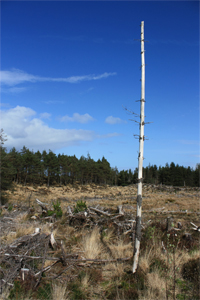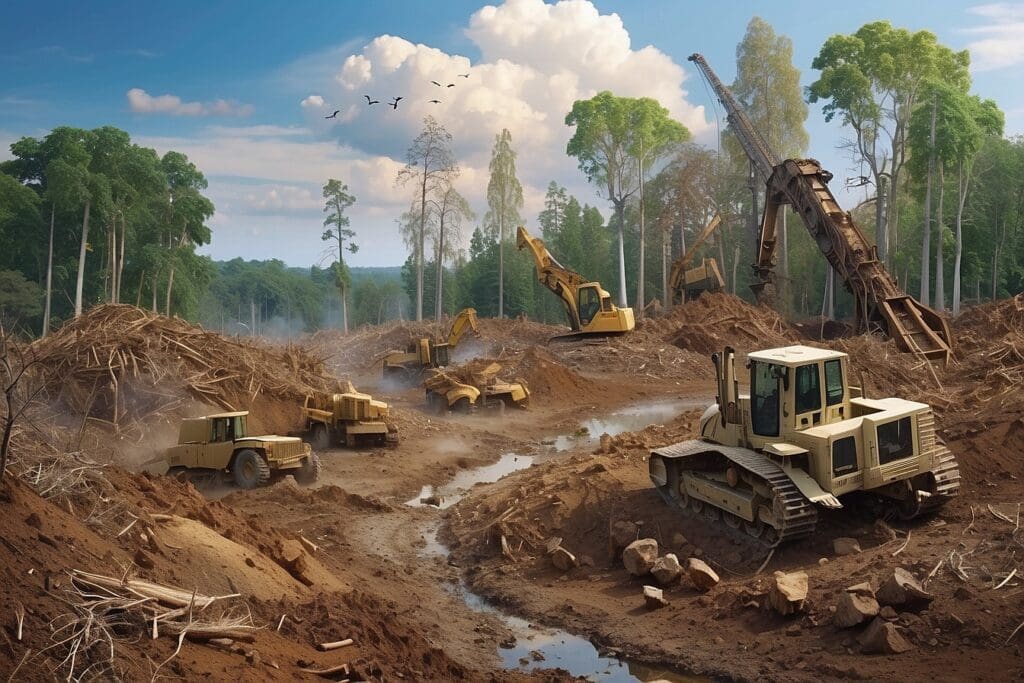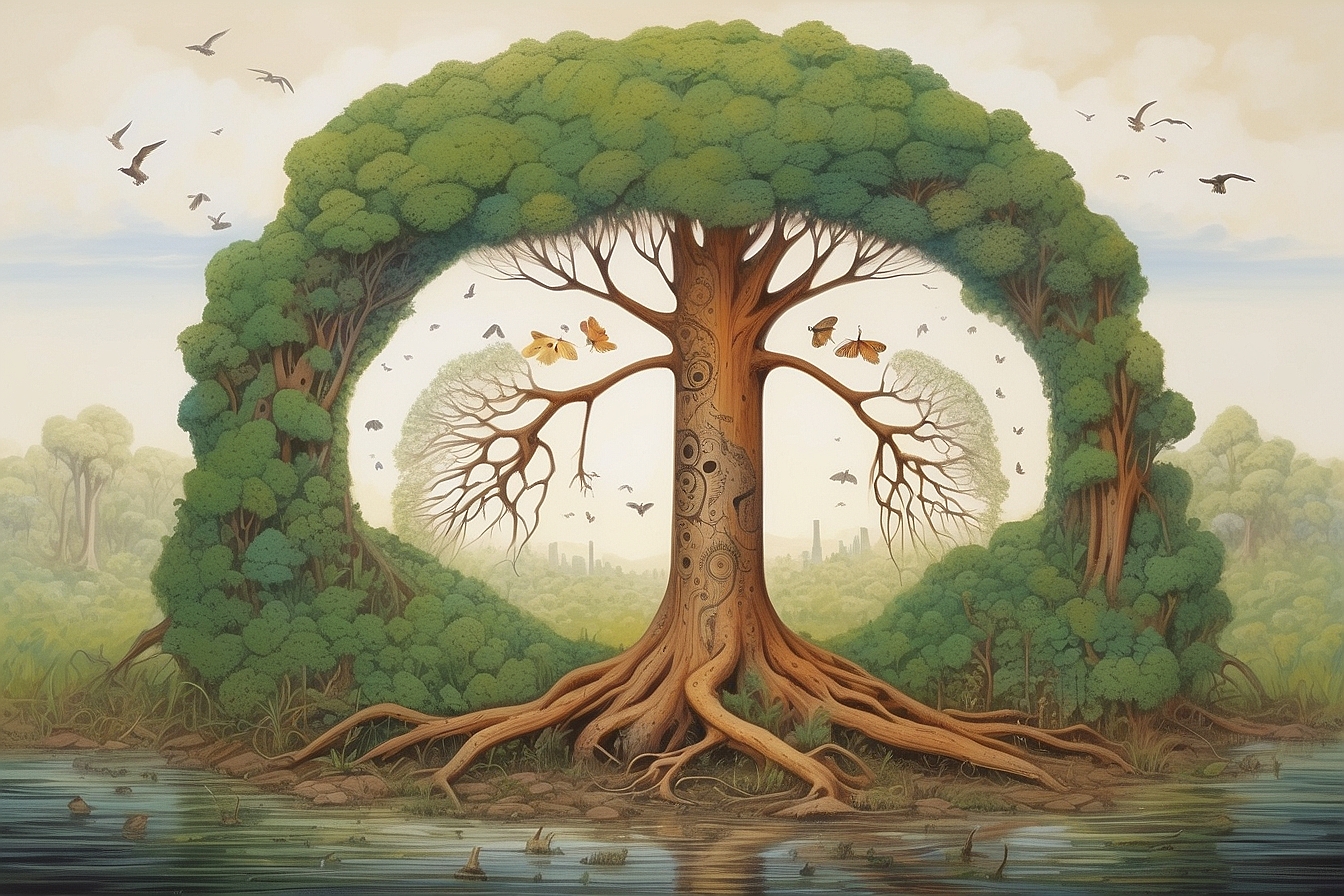Loss of extinct, endangered and threatened species continues to grow, there has been an underlying cause to almost every species – habitat loss.
Defining Habitat Loss
It is not enough to categorize all habitat loss as one in the same. There are three different categories of habitat loss that must be considered: 1) habitat destruction, 2) habitat degradation, and 3) habitat fragmentation1. When one thinks of habitat loss, however, one typically sees either anthropological or natural actions that directly result in the demolition of a habitat, and that is what we will explore in this article. Habitat destruction is the direct alteration of biomes and ecosystems due to either human or interspecies action or natural disasters that makes the land uninhabitable for the native species, thus reducing biodiversity.2 Although natural disasters like volcano eruptions, earthquakes, and tsunamis could cause this phenomenon, anthropological development and growth are the main causes of habitat destruction.
Causes of Habitat Loss
https://greeniacs.10web.site/GreeniacsArticles/Green-Living/Overpopulation.html”>growing human population, production of everything must increase in order to satisfy our needs. Destruction of habitat and habitat loss in general has been running parallel to the expanding numbers of the human population.3 There are a variety of reasons as to why modifications are implemented on land such as logging, agricultural practices, slash-and-burn techniques, and many others, usually in areas of high development. Habitat destruction, however, is not isolated to any single biome—it has immensely plagued every part of the world, especially areas of high agricultural output. Only 15% of European lands remain unmodified by humans. While in certain areas of the United States, less than 25% of native vegetation still exists.4 Although nations with untouched and undestroyed lands are dwindling, most restoration and conservation attention has been centered on the tropical forests of the world.
Tropical forests are home to about two thirds of the world’s species and 17 of the world’s 25 biological hotspots, which are areas with high concentrations of deforestation and has resulted in the destruction of the homes of many species. Deforestation has either killed off or endangered the existence of many species, such as the cotton-top tamarin7 which needs the multilayers of the rainforest to hide and forage. Currently, the rate of destruction of rainforest land is 160,000 square kilometers per year, which is about a 1% loss of the original 16 million square kilometers of tropic rainforest habitat. There is currently less than 9 million square kilometers of the original rainforest standing today.8
Effects of Habitat Destruction

Habitat destruction is a widespread problem that has affected almost every inch of this planet. Although it is only a category of habitat loss, most of the other categories ultimately will lead to habitat destruction. Habitat fragmentation is when a habitat is squeezed down to a much smaller size. Habitat degradation is when a habitat is damaged or many of its resources are depleted. These are all steps that will eventually lead to uninhabitable land for certain species and therefore, habitat destruction. Let’s take another look at the causes and linked effects of habitat destruction.
 As the number of people increase, the resources needed to sustain or just satisfy the desires of the population become a burden on nature. Logging, slash-and-burn and other agricultural techniques, and development of cities and roads have caused severe damage on habitats that many species rely upon.12 Wildfires that start off anthropologically (or naturally) can demolish large areas of forests, usually rendering them uninhabitable to many of the native species. The introduction of invasive species can also alter the landscape and the makeup of the ecosystem, endangering many indigenous species. The most well-known example of such a situation is the zebra mussels’ introduction to many lakes in America. This invasive species have out competed and outnumbered a variety of other mollusks that compete for plankton in the waters. The zebra mussels multiply quickly and have clogged up many pipes that carried water to various locations as well as taking up space that indigenous species need.13 This process then alters the Lake habitat, rendering it uninhabitable for many species that originally lived there, resulting in the disappearance of many native species.
As the number of people increase, the resources needed to sustain or just satisfy the desires of the population become a burden on nature. Logging, slash-and-burn and other agricultural techniques, and development of cities and roads have caused severe damage on habitats that many species rely upon.12 Wildfires that start off anthropologically (or naturally) can demolish large areas of forests, usually rendering them uninhabitable to many of the native species. The introduction of invasive species can also alter the landscape and the makeup of the ecosystem, endangering many indigenous species. The most well-known example of such a situation is the zebra mussels’ introduction to many lakes in America. This invasive species have out competed and outnumbered a variety of other mollusks that compete for plankton in the waters. The zebra mussels multiply quickly and have clogged up many pipes that carried water to various locations as well as taking up space that indigenous species need.13 This process then alters the Lake habitat, rendering it uninhabitable for many species that originally lived there, resulting in the disappearance of many native species.
Habitat loss has endangered the existence of countless species across the globe, causing huge concern for the world’s biodiversity. The destruction of habitats leave almost no hope for recovery, but habitat degradation and fragmentation may lead to this ultimate end. It is important to recognize the problem before we cannot mitigate anymore. Prevention is always better than mitigation. Let’s hope that as a society we can make major changes to preserve our ecosystems and stop habitat destruction in its tracks.





